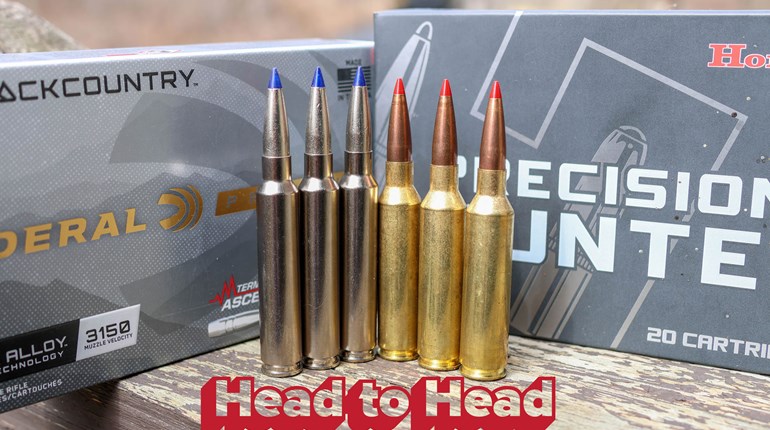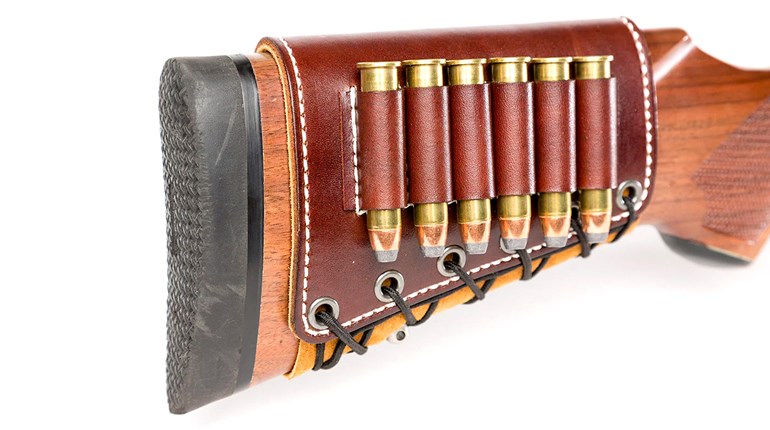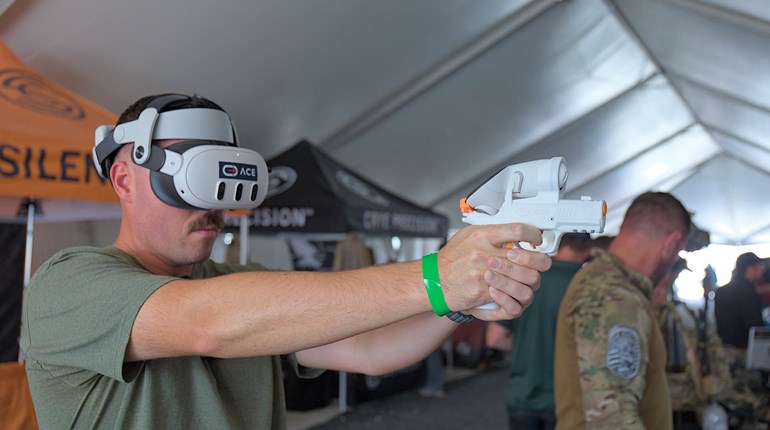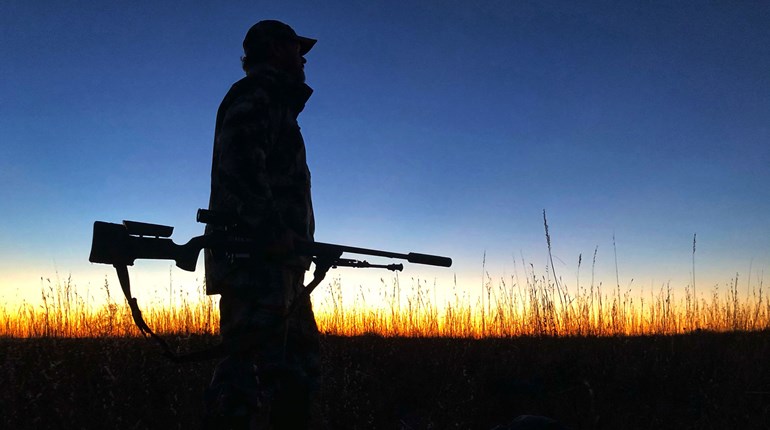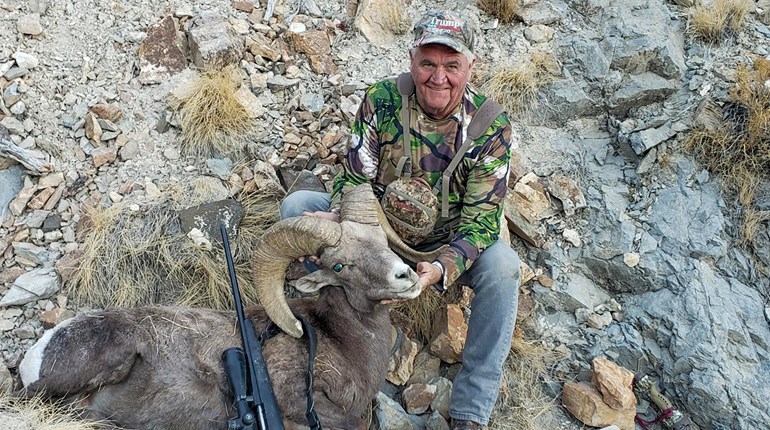
So you’ve taken the plunge, and decided that the time for your first African safari is now. Odds are that your initial trip will centered around the pursuit of the huge number of antelope that southern Africa has to offer, perhaps with a swine or bovine tossed into the mix. Commonly referred to as “plains game”—in order to separate the species from the larger and invariably more dangerous-game species like elephant, Cape buffalo, hippo and lion—these species are going to be the most frequently pursued on almost all safaris. Included in this group are the common antelopes like gemsbok, kudu, impala, hartebeest and springbok, as well as the warthog, zebra, wildebeest (both black and blue subspecies) and the more exotic variants like the sable, eland, lechwe, nyala and bushbuck.
All are wonderful, and while over the course of more than a dozen safaris across Southern and Eastern Africa I've been blessed with the opportunity to take a good number of these species, I still haven’t checked all the boxes. I’ve learned which species can break the bank, and I've learned how to have a ton of fun with nothing more than pocket change in my account. Looking at the latter—in a situation where finances are limited—I’d like to highlight my top five “best-bang-for-the-buck” plains-game species which provide the most amount of fun for your trophy fee.

1. Impala
Even though the impala is smaller than our white-tailed deer, these antelope are a staple on safari. They possess beautiful, lyre-shaped horns with their unique rings and their three-color coat makes a striking image. A mature impala ram makes not only a respectable trophy, but excellent table fare. They are common to most hunting concessions, and one of the greatest challenges of hunting an impala ram is the sheer number of ewes which tend to accompany him; fooling all those eyes is not always a simple task. Depending on the country and area you’re hunting, an impala ram probably won’t have a trophy fee more than $750, and no matter whether you choose a shoulder mount or a European mount, you’ll always look back to your impala with happy memories. They have a unique tail swish while feeding and a jumpy nature—often teaming up with vervet monkeys to make a mutual alarm system—and once a herd of impala is spooked, they have this wonderful jumping system where the scent given off by one animal causes another to leap into the air.

2. Warthog
Africa’s most popular pig certainly warrants a place on this list, as they are tough as nails and so ugly they're adorable. With the antenna-like tail extended straight upward as they run, the warthog—or vlakvark as its known in Afrikaans, or ngiri in Kiswahili—offers a great hunt. They can take a pounding, and while they possess a face only a mother could love, they are so uniquely African that they deserve a slot here, especially because the fee for a trophy boar is usually south of $800, sometimes half that figure. With its unique facial warts, and long curving tusks, a boar warthog might be the closest a hunter can come to holding African ivory. Should the camp chef offer to prepare pork loin for you, please accept the offer; you shan’t regret it.

3. Zebra
Sit down with a picture book of African animals with almost any toddler, and they will be able to pick out a zebra immediately. The zebra is so unique that they help define the continent’s fauna, and despite the cries of those who feel they are too close in relation to our horses, the zebra is revered by Africans of all backgrounds. As they possess no horns, nor extended teeth, the trophy is the hide; but as it is with all game species in Africa, the meat is readily consumed. Depending on the region of Africa you are hunting, the zebra you see may display a stark black/white contrast, or there may be a “shadow” to their hide; it makes no matter, as the animal will be representative of the area you experienced. While a common deer cartridge like the .270 Winchester or .30-06 Springfield will cleanly take any zebra, you absolutely do not want to hit them wrong, as they can go an awful long way when wounded. The successful hunter has several options for the trophy, including the classic “chess piece” shoulder mount, or a flat-skin or rug. Trophy fees will average around $1,500 for a Burchell’s stallion, so the zebra offers a great value.

4. Kudu
Probably the most expensive on this list, I feel a proper kudu bull represents a great value, if more costly than some of the other species. A good kudu bull can have a body size near that of an elk, and those dark brown corkscrew horns will measure in excess of 60 inches around the curve on exceptional specimens. Known across southern and eastern Africa as the ‘Gray Ghost’—due to the body striping and classic “drink milk” moustache helping to camouflage the animal in the African bush—the Southern Greater kudu is one of Africa’s most revered trophies, and the one species I’d splurge on, if possible. Be careful with this one, as some operators charge a flat fee (almost guaranteed to be in excess of $2,000, sometimes double that) while other will bracket the trophy fees commensurate to the length of the horns. Despite their size, kudu aren’t especially tough; put your bullet where it belongs and your bull will be in the salt. Once you hold those long, spiraling horns which culminate in ivory tips, you’ll never forget the experience.

5. Blue Wildebeest
As if God made an antelope out of spare parts, the blue wildebeest is anything but handsome. But, the well-earned nickname of “Poor Man’s Buffalo” tells you just how tough a mature blue wildebeest bull can be, and how much a fully mature bull can mean to a hunter who holds Africa near-and-dear to their heart. The long, sloping nose, gangly legs, rocking gate while running and wide horns with bosses all add up to a near-comical game animal that makes for a great hunt. Trophy fees are usually under $1,500, and these animals make a great shoulder mount, as well as a respectable European mount. You can spend a considerable amount of time on the trail of a fully mature wildebeest bull, earning the shot opportunity and making the trophy that much sweeter.
Bonus: The Females
If you are stretching your hunting dollars on safari, ask your professional hunter (PH) about the possibility of culling several female animals. The opportunity gives a hunter the much-desired time “on the sticks,” garnering experience with African animals at a discounted rate in comparison to the trophy bulls. Quite often, the excess females need to be taken in order to help maintain a healthy herd, and the time behind the trigger will surely warrant the investment.












